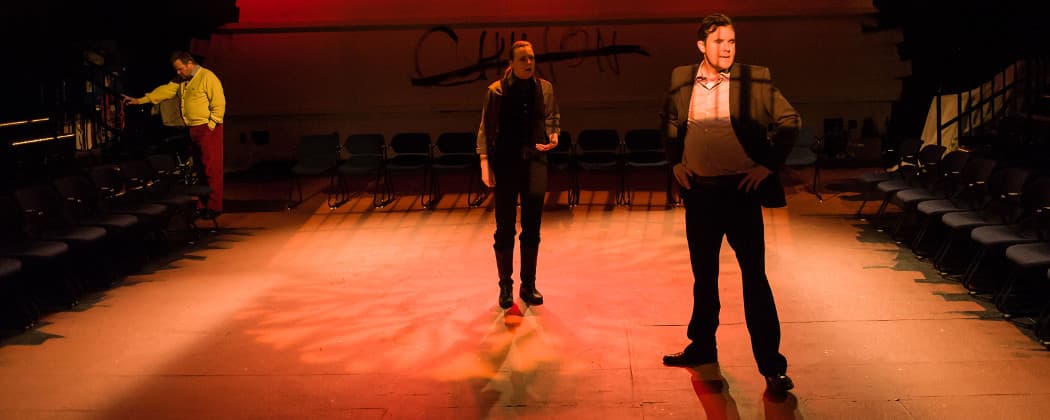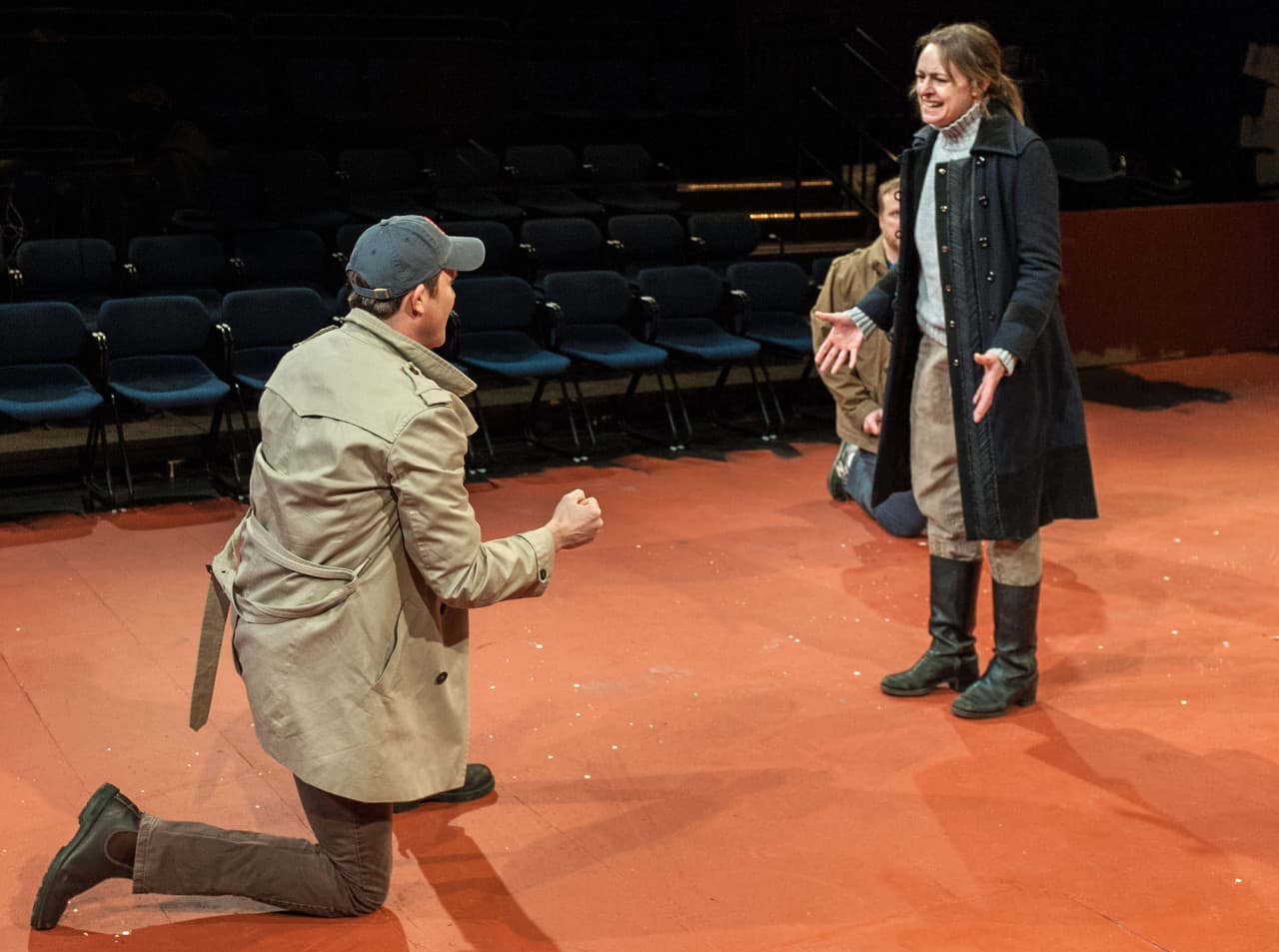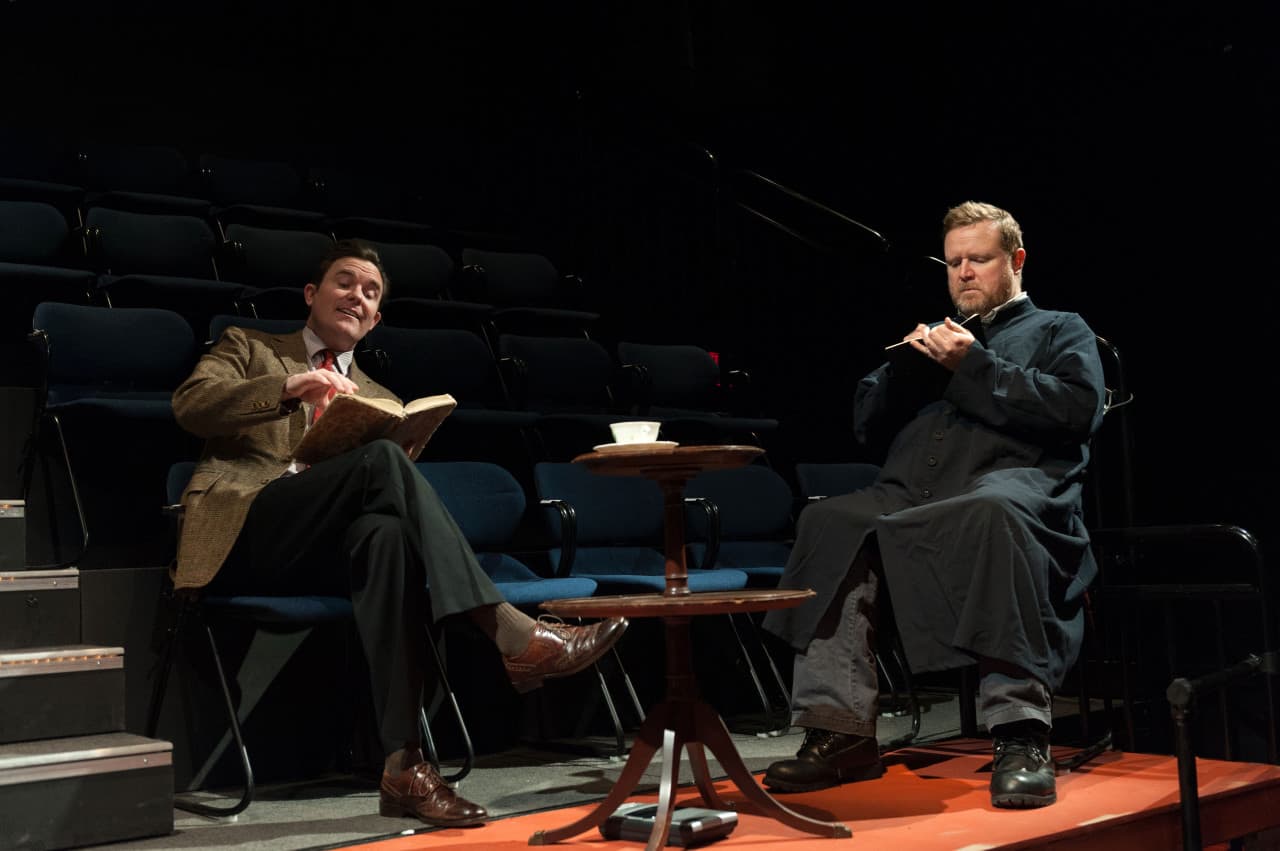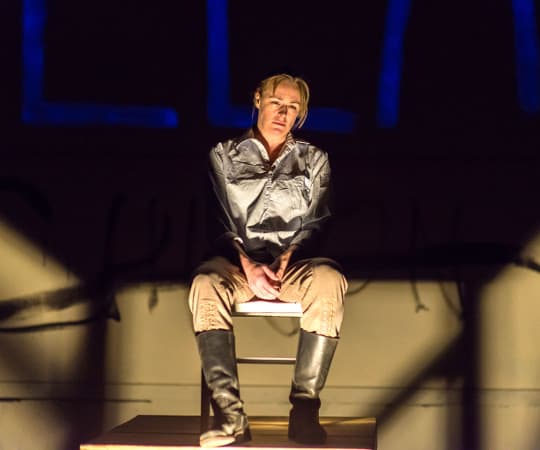Advertisement
'Bedlam's Saint Joan' Is A Shaw That Must Go On

Like the Marines, Bedlam’s Saint Joan seeks a few good men. And in "Bedlam’s Saint Joan,” she gets them. Andrus Nichols’ rambunctious then fanatical, inspired then bewildered, eternally earthy Maid of Orleans jousts here with just three actors—Edmund Lewis, Tom O’Keefe and director Eric Tucker—who play 23 parts in an ebullient staging of George Bernard Shaw’s passionate (well, for him) 1924 “Saint Joan.” Hosted by Underground Railway Theater at Central Square Theater (through Feb. 8), Bedlam’s three-hour production is completely thrilling: a brainy, blabby historical drama married to a thoroughly modern immersion experience.

The New York-based Bedlam first conflated “Saint Joan” in 2012; it has since given “Hamlet” the same Reduced Shakespeare Company treatment—though Bedlam’s approach is more rigorous and less jokey, its modern-dress production ablaze with energy. Certainly the title character, at least in the beginning, seems more likely to set the world than herself on fire. Bounding as if shot from a cannon into the castle of French squire Robert de Baudricourt in the spring of 1429, Nichols’ athletic Joan bursts with purpose and youth. What she wants is as simple as she professes herself to be: a horse, some armor and an escort to the court of the Dauphin, from which she will defeat the invading English and put the snivelly French heir on the throne. Sounds impossible, no? But the girl is just so “positive.” And wouldn’t you be if you had, via marching orders dispensed by angelic voices, a direct pipeline to God?
But in the 15th century, as Joan will be pigheadedly slow to learn, having a connection to the Deity that bypasses the Church is dangerous business. And the Church isn’t the only powerful entity to find the rabble-rallying Maid inconvenient. A nationalist as well as a rebel, she threatens a feudal aristocracy that does not consider its landholdings a gift from God or king. To Shaw, of course, this is more than just history—and an excuse to make fun of the English (though he does so in spades). The play’s parade of politics, power mongering, prejudice and strained alliances of strange bedfellows is rife with contemporary echoes, both for the playwright’s time and ours. And Bedlam cuts barely a word of it, at the same time suffusing the talk with enough vehemence and interpretive intelligence to make the play’s six scenes in three hours move like a juggernaut. Then there’s Shaw’s rueful epilogue, here set smack in the middle of the audience.

Not that the audience, or the play, stays in one place. The former is configured on three sides of the playing space with some of the spectators in “moving seats” that will give them five different perspectives on the action snaking among and amid them. Stage dressing consists of a couple of chairs (as suitable for tossing as sitting), a few props, and tape recorders that emit, among other things, birdsong and battle noise. Locales are scrawled across the backdrop in paint or in light like graffiti. And the men execute split-second character changes with the aid of a medieval headdress, a cassock or a pair of spectacles.
Yet even when one or another of the actors is carrying on a conversation among himself, or when a character is being tossed among the guys like a football, it’s quite clear who’s speaking. And if you have not just reread the play, as I did, and don’t know a Dunois from a Dauphin, no matter: You will understand who represents what interest, however blatant or hypocritical, and see just why the tomboy saint is, for all of them, a threat to be both admired and gotten rid of posthaste. As Joan asks Heaven at the culmination of the play’s supernatural-reunion coda: “Oh God that madest this beautiful earth, when will it be ready to receive Thy saints? How long, O Lord, how long?”

Not that Shaw’s Saint Joan is particularly saintly; she was not, after all, canonized until 1920 and would not have been had she not first been roasted. In Nichols’ robust rendering, she is both sincere and unstoppable but, as the play progresses, also bullheaded, arrogant and perhaps as much in love with celebrity as she is with God. Yet she never loses the girlish naiveté that makes her disillusion and comeuppance so poignant. And director Tucker has ingeniously staged Joan’s trial with the ashen Maid in a chair atop a table and her questioners behind us, becoming, in essence, a new set of “voices” set up against the ones the defendant believes to have guided her.
Among the male actors, Tucker is first among equals, perhaps because he has given himself extra helpings of the best parts: Joan’s dashing battlefield pal Dunois, near-violent in the anguish that overcomes him when he realizes he cannot save her from her own fanaticism, and a late-medieval Earl of Warwick transformed into a tweedy slice of early-20th-century English upper crust. (With his shoulders thrust back and his snug jacket riding up, Tucker is hilarious yet chilling in the role of Joan’s secular foe.) Of course, when you are ping-ponging among half a dozen roles, subtlety is impossible. Yet O’Keefe brings a fierce, true rather than expedient faith to Peter Cauchon, the Bishop of Beauvais later scapegoated for the burning of Joan. And Lewis is particularly effective as the shlumpy pacifist of a Dauphin.
Way back in 1998 at Providence’s Trinity Rep, Amanda Dehnert helmed a stripped-down “Saint Joan” for six actors. Eric Tucker was in it. But in “Bedlam’s Saint Joan,” he does not so much appropriate the concept as goose it up and spill it out in a way that’s truly exciting. Moreover, the show gives the lie to the troupe’s crazy-house moniker: There’s more inspired lucidity than caged lunacy in this roughhouse transformation of a witty, epic jaw on history, philosophy and the making of a martyr into a superb Shavian chamber concert.
Carolyn Clay was for many years the theater editor and chief drama critic for the Boston Phoenix. She is a past winner of the George Jean Nathan Award for Dramatic Criticism.